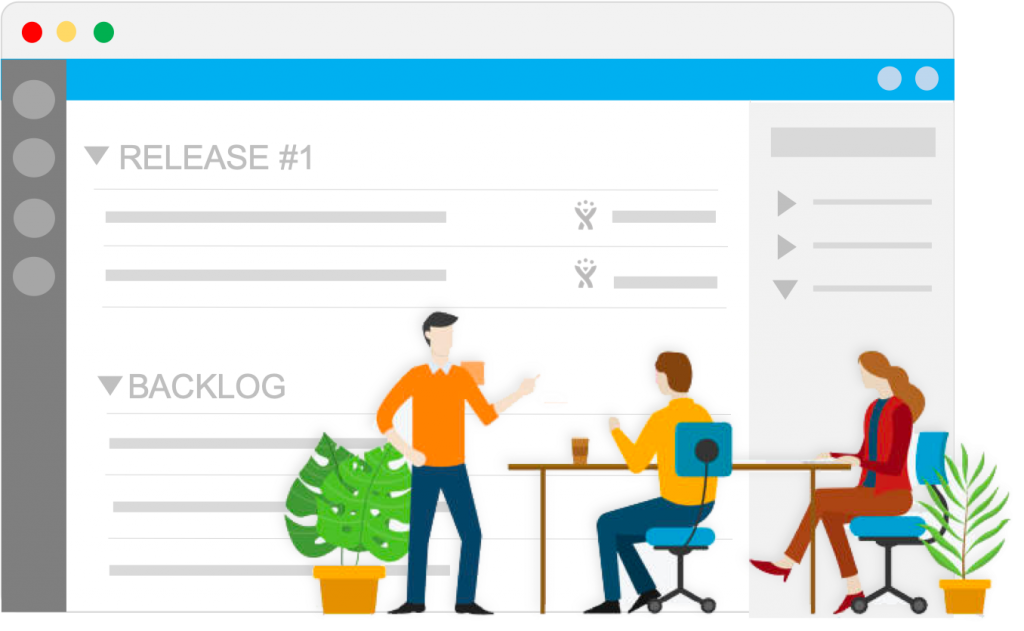FEATURE
Manage Your Backlog

Key Features
- Drag n drop product backlog
- Organize requirements into releases
- Kanban status tracking of release items
- Optionally sync requirements to JIRA for dynamic updates
- Easily review updates on release log
Overview
It can be daunting to stay on top of all of the requirements that are in flight at any given time, across current and upcoming roadmap projects, continuous improvement, technical, and stakeholder initiative support. Some of these originate from large projects (stones), others come in as ‘loose leaf” requests (pebbles), some are urgent while others must align with cross-team timelines (boulders). All of them, however, require clear requirements to be defined and prioritized for the team to work on. Doing this in JIRA becomes all the more challenging after the team has created their own tasks and stories that can muddy the waters – how do you as the Product Owner keep all this straight, particularly as it relates to actual Product priorities and the roadmap? It’s not easy, but Productfolio can help!
Defining Roadmap Project
Modern Agile teams don’t write 50-page PRDs any more, but that doesn’t mean its a bad idea to think in blocks of work that are bigger than a sprint and define what those are. To that end, we plan projects on a roadmap and should have a definition of what each of those roadmap projects is. A one-page ‘project poster’ is a nice way to achieve this, providing high-level information such as a summary, discussion, and link to the key requirements of the project, so there is that referenceable ‘source of truth’ for each item on the roadmap. Productfolio makes this easy, providing a simple template for building the information, and an easy way to find and open the information, by clicking the items on the roadmap.
Defining Requirements
Whether you use User Stories to define Agile-style requirements or write more traditional Business or Functional Requirements, each requirement can be tracked and referenced independently. You can also see a list of requirements for each roadmap project, so it’s easy to see how work relates. Assign ownership, themes, tags and set priority, and define acceptance criteria for each requirement. You can easily find requirements later by using the search tools in the backlog tool to discover them.
Prioritizing Releases
The Backlog makes it easy to drag items up and down in the list, to reflect the priority of work. Priority can also be indicated for each requirement (ex: urgent, normal, low priority) and the backlog can be filtered accordingly. When you’re ready to make work actionable for the team, Productfolio makes it easy to set up release containers that requirements can be dragged into. If your team works in JIRA, you can use releases to push those collections of requirements to the team ahead of your next Backlog Grooming session, so they receive the requirements when they’re needed.
Syncing with JIRA
Most Product development teams work in JIRA these days – JIRA works great for that purpose but it’s not a great planning tool, which is where Productfolio comes in. Use Productfolio to prioritize, plan, build your roadmap, and define key requirements, but push those requirements to JIRA when they’re ready to be worked on. Productfoliofolio makes this easy – you can do it one requirement at a time or in bulk, based on assigning items a tag or a release. Once requirements are sync’ed with JIRA, you will receive updates status for those items, as the workflow state changes in JIRA. You can even turn on automatic progress tracking on the roadmap, to show what % of a project is completed, by the status of the corresponding requirements in JIRA.